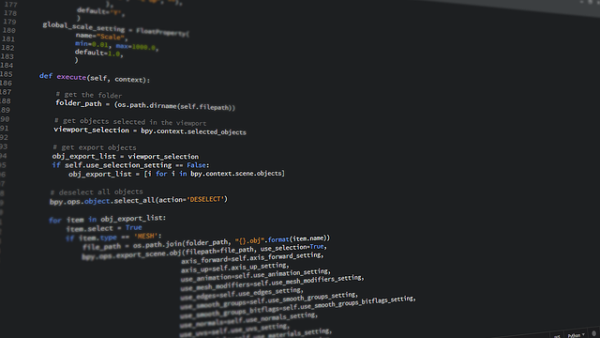5 Reasons Why You Need to Learn Python to Get a Job In the Machine Learning Space
Machines have been an integral part of our lives for years now. And now with machine learning and AI, it has become possible for machines to work independent of human intervention. Progress in this space now allows machines to carry out tasks as diligently and intelligently as humans do, with high accuracy, if not completely perfect. We are quite literally trying to build a brain for machines, and that can be done only if machines are taught to learn the way we do. No wonder machine learning has found such a huge following in the world today, both by its creators and the users.
As with any domain, there is always a tussle and debate around the right way to build a particular software and the programming language which is the best fit for it. The domain of machine learning is not an exception either. And while the tide keeps shifting every once in a while, major support for Python has stayed in place consistently through the years.
Here’s why a Machine learning with Python course is absolutely essential for you if you’re looking to make your mark in the machine learning space and get a job that helps you make it happen.
1.Reusability of code and ease of configuration
Machine learning, in itself, is quite a complex challenge to begin with. Understanding the logic, recognizing patterns, and developing code that can help keep it all together is even more difficult than it might seem at the outset. The last thing any programmer would want is a language that makes things even more complex than they need to be.
Python comes with a good collection of libraries that serve a major purpose of code reusability. Not only are these libraries filled with instructions of how to use them in the best way, but simple tweaks in their modules can help them to be reused for different functionalities within the same model. Configuring them is as easy as breaking them down, testing them, making changes, and rebuilding them, all within a single space. Compare this with other languages and many programmers struggle with challenges like multiple structures, syntax differences, and so on.

2.Identifying and correcting errors quickly
We all know that machine learning is not going to be a simple task. There will be multiple iterations of building the algorithm, carrying out tests, and verifying results. What could be detrimental in this aspect is if there’s no way to figure out why the results are incorrect and trace them back to the code in order to understand the area responsible for the failure. Even popular languages like R, that boast extensive application capabilities, don’t make this an easy task, requiring hours and hours spent in simply detecting a small error.
Contrast that with Python that is extremely handy with error reporting which is specific and right on point. A few clicks can take you right to the module that caused the error and allow you to get down to the root cause in a considerably shorter period of time.
3.Machine learning, and not machine solving
The goal of machine learning is to create logic and algorithms that help the machine to learn by itself. We are not looking for results on what the machine is doing and what output it brings out. That enters the realm of research in evaluating machine performance.
Python helps programmers focus on the core aspect of machine learning. It is highly reliant on real-time processing and analysis of data, which allows the machine to make changes in its behaviour. This aspect of helping a machine gain insight into its own working is deftly achieved by using Python than any other language.
4.Wider applications that support machine learning
Picking up Python as one of the primary programming languages to be proficient in has a lot of advantages that go beyond the world of machine learning, but ultimately feed right back into it. It helps you be more aware of the different logic principles that govern code functionality and make you a better programmer. This helps pick up other languages speedily and code them in an effective manner.
A lot of other resources are also essential in understanding the nuances of machine learning, and these may make use of programming components that are independent of the domain. However, most of these are also built using Python, so knowing the language beforehand can always help you understand them better.
5.A high demand for Python in major job markets
Currently, the United States is one of the biggest markets where machine learning developments are at an all-time high. A look at job portals, makes it evident that many companies are on the lookout for good Python programmers that understand the nitty-gritty of machine learning and can develop excellent solutions.
In the coming years, this trend is just going to flow over to markets all across the world. So even if you don’t have immediate plans of going to the US and applying for a job, preparing for the inevitable boom in the sector is always in your benefit.
Learning other languages like SAS or R is a good decision if you have set your mind to enter a specific retail space that makes use of them widely. However, a good Machine learning with Python training course is your best choice for staying in step with the changing times and being future ready.
